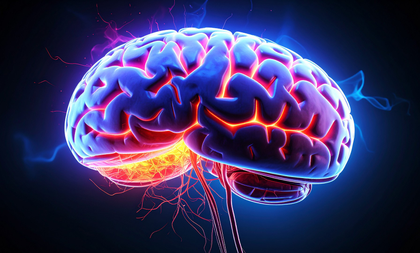Sleeping disorders may signal risk of Parkinson's disease, dementia
By IANS | Updated: May 30, 2025 14:38 IST2025-05-30T14:32:00+5:302025-05-30T14:38:08+5:30
New Delhi, May 30 Sleeping disorders may be act as an early indicator of neurodegenerative diseases like Parkinson's ...

Sleeping disorders may signal risk of Parkinson's disease, dementia
New Delhi, May 30 Sleeping disorders may be act as an early indicator of neurodegenerative diseases like Parkinson's disease and Lewy body dementia (LBD) -- a type of dementia, according to a study.
The study focussed on patients with Rapid eye movement behaviour disorder -- a sleep disorder where individuals physically act out their dreams during the rapid eye movement (REM) stage of sleep.
"Normally, when we're asleep and dreaming, our muscles are paralysed, but around age 50, some people become very agitated during sleep and start punching, kicking and screaming," said Shady Rahayel, a medical professor at Université de Montréal in Canada.
Unlike sleepwalking, which occurs during slow-wave sleep, RBD occurs during rapid eye movement (REM) sleep, he added, and it affects people of middle age.
In the study, published in the journal eBioMedicine, the researchers said that nearly 90 per cent of people with the disorder will go on to develop either Parkinson's disease or LBD.
“RBD is an early warning sign that certain mechanisms in the brain are no longer working as they should," said the team.
"The people with RBD who come to see us are in good health... but of those who subsequently develop a disease, half will have Parkinson's and the other half LBD."
Rahayel explained that with LBD, the second most common form of dementia after Alzheimer's, "patients are no longer able to function in everyday life".
In addition to dementia, "they will have Parkinson's-like symptoms, vivid visual hallucinations, fluctuating attention and other symptoms."
For the study, the team used data from 1,276 MRI scans of people at risk of, or with, Parkinson's disease or LBD, and also of healthy people.
Using machine learning and computational models, the researchers identified two trajectories of brain atrophy progression.
LBD seems to be associated with brain atrophy that begins in the cortex and then spreads to the interior of the brain, while in Parkinson's the atrophy progresses from the interior to the exterior of the brain.
The team next aims to investigate the factors that lead to this deterioration in the cortex, such as vascular lesions, the effects of drugs, and of lifestyle choices.
"Now that we have identified these new progression patterns, our goal is to be able to determine from an MRI whether a person has one of them so that we can provide the best possible care," said Rahayel.
Disclaimer: This post has been auto-published from an agency feed without any modifications to the text and has not been reviewed by an editor
Open in app